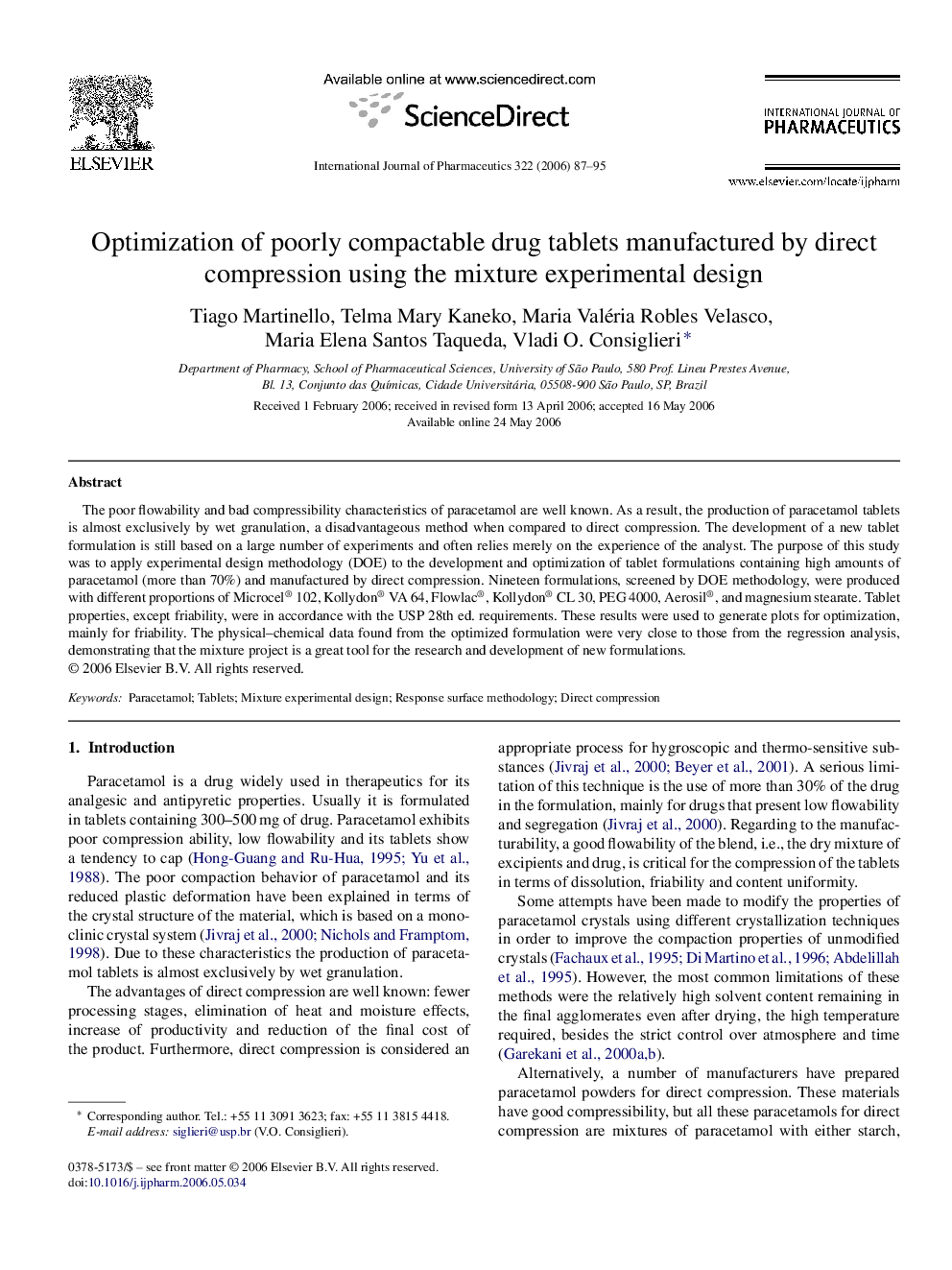| Article ID | Journal | Published Year | Pages | File Type |
|---|---|---|---|---|
| 2506731 | International Journal of Pharmaceutics | 2006 | 9 Pages |
The poor flowability and bad compressibility characteristics of paracetamol are well known. As a result, the production of paracetamol tablets is almost exclusively by wet granulation, a disadvantageous method when compared to direct compression. The development of a new tablet formulation is still based on a large number of experiments and often relies merely on the experience of the analyst. The purpose of this study was to apply experimental design methodology (DOE) to the development and optimization of tablet formulations containing high amounts of paracetamol (more than 70%) and manufactured by direct compression. Nineteen formulations, screened by DOE methodology, were produced with different proportions of Microcel® 102, Kollydon® VA 64, Flowlac®, Kollydon® CL 30, PEG 4000, Aerosil®, and magnesium stearate. Tablet properties, except friability, were in accordance with the USP 28th ed. requirements. These results were used to generate plots for optimization, mainly for friability. The physical–chemical data found from the optimized formulation were very close to those from the regression analysis, demonstrating that the mixture project is a great tool for the research and development of new formulations.
